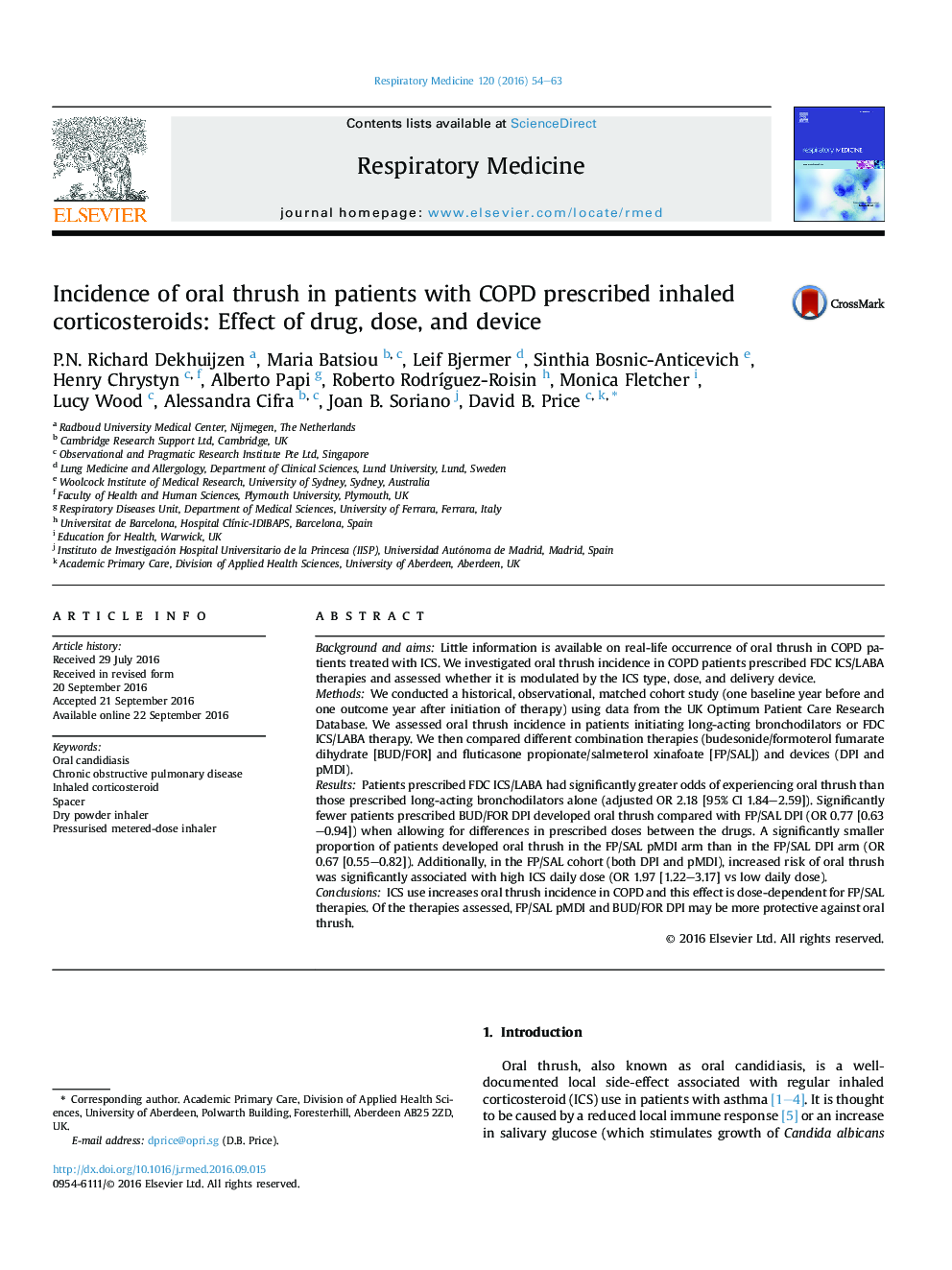| Article ID | Journal | Published Year | Pages | File Type |
|---|---|---|---|---|
| 6241021 | Respiratory Medicine | 2016 | 10 Pages |
â¢Real-life occurrence of oral thrush in patients with COPD prescribed ICS is reported.â¢Effect of different ICS types, doses, and delivery devices is investigated.â¢Some therapeutic strategies are more protective than others against oral thrush.
Background and aimsLittle information is available on real-life occurrence of oral thrush in COPD patients treated with ICS. We investigated oral thrush incidence in COPD patients prescribed FDC ICS/LABA therapies and assessed whether it is modulated by the ICS type, dose, and delivery device.MethodsWe conducted a historical, observational, matched cohort study (one baseline year before and one outcome year after initiation of therapy) using data from the UK Optimum Patient Care Research Database. We assessed oral thrush incidence in patients initiating long-acting bronchodilators or FDC ICS/LABA therapy. We then compared different combination therapies (budesonide/formoterol fumarate dihydrate [BUD/FOR] and fluticasone propionate/salmeterol xinafoate [FP/SAL]) and devices (DPI and pMDI).ResultsPatients prescribed FDC ICS/LABA had significantly greater odds of experiencing oral thrush than those prescribed long-acting bronchodilators alone (adjusted OR 2.18 [95% CI 1.84-2.59]). Significantly fewer patients prescribed BUD/FOR DPI developed oral thrush compared with FP/SAL DPI (OR 0.77 [0.63-0.94]) when allowing for differences in prescribed doses between the drugs. A significantly smaller proportion of patients developed oral thrush in the FP/SAL pMDI arm than in the FP/SAL DPI arm (OR 0.67 [0.55-0.82]). Additionally, in the FP/SAL cohort (both DPI and pMDI), increased risk of oral thrush was significantly associated with high ICS daily dose (OR 1.97 [1.22-3.17] vs low daily dose).ConclusionsICS use increases oral thrush incidence in COPD and this effect is dose-dependent for FP/SAL therapies. Of the therapies assessed, FP/SAL pMDI and BUD/FOR DPI may be more protective against oral thrush.
